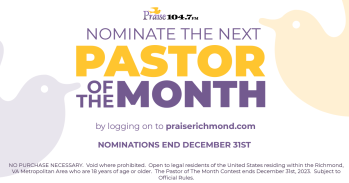By David Kessler Grief expert |
As John Adams, our second president, lay on his deathbed, his last words were, “Jefferson still lives.” What he didn’t know was that our third president, Thomas Jefferson, had died a few hours earlier. Both men died on July 4, 1826, the 50th anniversary of the signing of the Declaration of Independence. You may think this is about to become a history lesson, but it’s not. It is a discussion of the afterlife and an exploration of the question: “Do we really die?” Many believe that for Adams there were deathbed visions of a world yet to come. As we die, the veil between life and death is lowered for the dying. You would be surprised to look into the afterlife and see someone there waiting whom you thought was in our earthy world of the living. I believe, as many others do, that John Adams saw his friend waiting for him and realized not only that death is not an ending, but that we continue to live. Jefferson lives!
We have all been taught that, if nothing else, death is the end—our end. Death is a broad traveler in our society today. It is sometimes the result of violence, sometimes a kind act of nature, sometimes the end of a long disease. We watch it in our homes on TV, we pay to see it on movie screens and we play with it in video games. Perhaps we hope that the more we view it, the less we will fear it. Albert Einstein pointed out that time is not constant, it’s relative to the observer. For now, we can only observe time and the dying. As my work has brought me closer to this unwanted visitor, I have found more peace in death, and I have come to know on a very personal level that it is not an ending.
We live in time and die in time. While we inhabit our bodies, time is a useful measurement. Yet it has only as much value as we give it. Webster’s Dictionary defines time as “an interval separating two points on a continuum.” Birth appears to be the beginning, and death appears to be the end, but they are not—they are just points on a continuum.
Two weeks before my father died, I moved him into my apartment. I had a hospital bed brought into the living room. There he would receive one visitor after another. In the evening, friends and family would pull up chairs surrounding his bed. In illness as in health, he was the center of attention. The circle of loved ones remained right up to his death. After he died, we spent time with him, but we suddenly realized his body was no longer given any attention. His body was no longer the center of attention. We were still talking, crying and laughing, but our body language and our focus was now on his spirit and not his body.
If you have been with a loved one who has died, you quickly see that his spirit has left his body. That spirit that is beyond description that made our loved one who he is—a father…or a mother—is forever gone from its earthly body. The spark of life has left. Before us lies the body, like a suit of clothes he wore his whole life. We love it. We are familiar with the look of it, and yet we know that who the body is…is so much more. And that “so much more,” also known as his spirit, no longer dwells in the body.
How to better understand death
None of us knows what will happen after death, but I believe—if you look deep inside, deep in your soul—you will know you have always existed and always will. Spirit is eternal. If you think back, you’ll remember you never felt as if you didn’t exist before you were born into this life. Rather, you felt as if you always existed and always will. That’s why this death will not be an ending. You may not have life as you know it once you die, but you will continue. If you have lost a loved one, he still continues. The dying still exist. Now when someone I know is dying, I don’t say goodbye anymore, I just say…until we meet again. Marianne Williamson always reminds those at her lectures about A Course in Miracles that birth is not a beginning and death is not an ending. There is a shift from the body identification to the spiritual identification.
I was so gratified after the last article I wrote about how many people were willing to share their stories about deathbed visions on Oprah.com, Facebook and Twitter. These people who decided to share their stories online are a validation that our loved ones live on. And for each person who shared a story online, there were probably hundreds to thousands who have stories they didn’t share.
We must continue to examine the meaning of death because death is central to the meaning of life. If death is an enemy that triumphs over us when our lives end, if death is a horrible trick of nature that defeats us and our health, then our lives are meaningless. But if we understand that we are born, we flourish and when our time comes we die physically but not spiritually, we will live our lives from a meaningful place and live our deaths in a meaningful way.
No one can really claim to understand death, unless they have actually died. We’re only observers until our time comes. What I teach about death is what I have learned from it. While my medical training touched on the subject, I learned most of what I know about death from the countless people I have had the privilege of caring for, and sharing with, in these most precious, final moments. What I know for sure is that love is a house that even death cannot knock down.
David Kessler is the author of Visions, Trips and Crowded Rooms (May 2010), as well as the co-author with Elisabeth Kübler Ross of On Grief and Grieving and Life Lessons.













